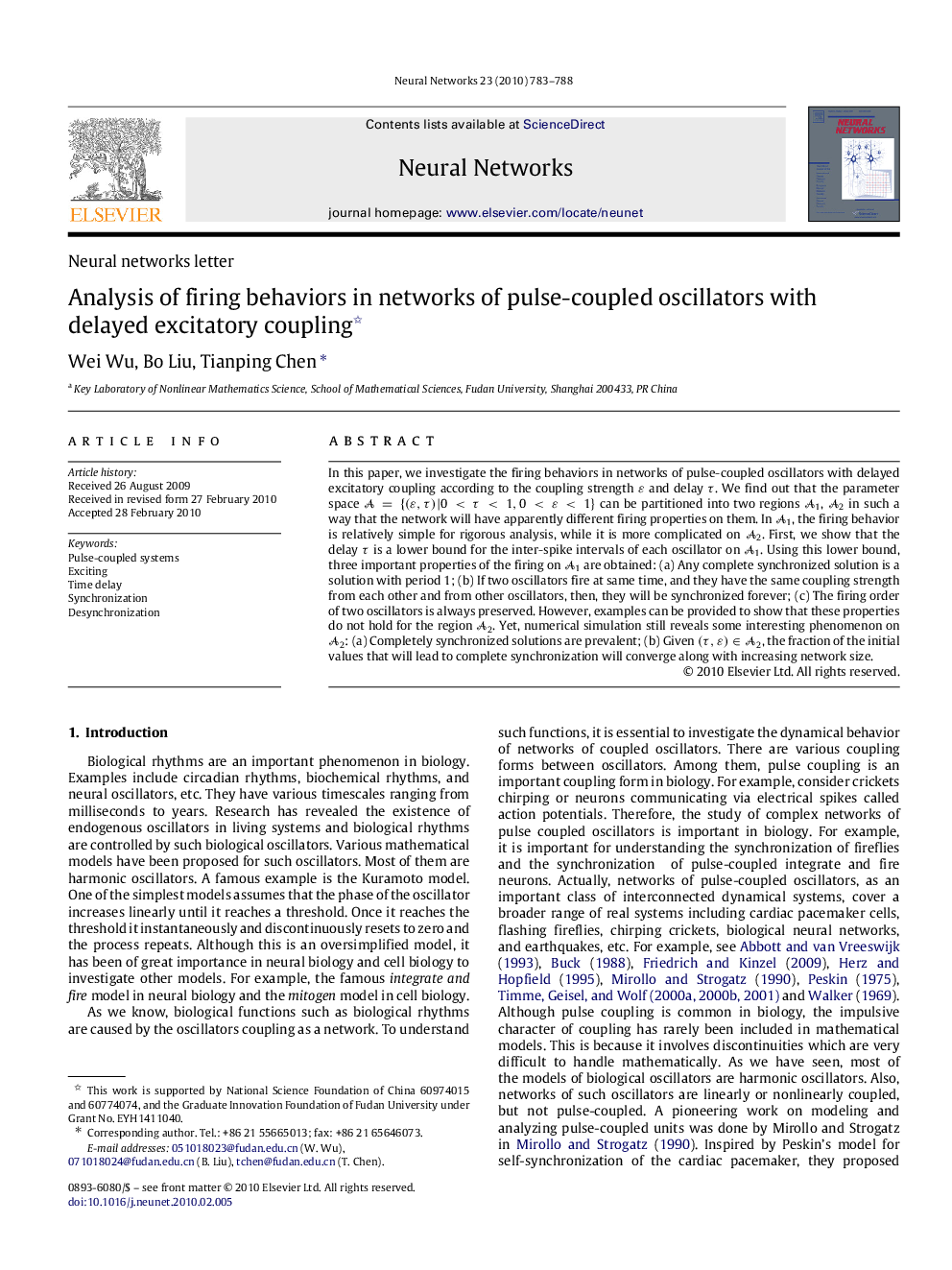| Article ID | Journal | Published Year | Pages | File Type |
|---|---|---|---|---|
| 404389 | Neural Networks | 2010 | 6 Pages |
In this paper, we investigate the firing behaviors in networks of pulse-coupled oscillators with delayed excitatory coupling according to the coupling strength εε and delay ττ. We find out that the parameter space A={(ε,τ)|0<τ<1,0<ε<1}A={(ε,τ)|0<τ<1,0<ε<1} can be partitioned into two regions A1A1, A2A2 in such a way that the network will have apparently different firing properties on them. In A1A1, the firing behavior is relatively simple for rigorous analysis, while it is more complicated on A2A2. First, we show that the delay ττ is a lower bound for the inter-spike intervals of each oscillator on A1A1. Using this lower bound, three important properties of the firing on A1A1 are obtained: (a) Any complete synchronized solution is a solution with period 1; (b) If two oscillators fire at same time, and they have the same coupling strength from each other and from other oscillators, then, they will be synchronized forever; (c) The firing order of two oscillators is always preserved. However, examples can be provided to show that these properties do not hold for the region A2A2. Yet, numerical simulation still reveals some interesting phenomenon on A2A2: (a) Completely synchronized solutions are prevalent; (b) Given (τ,ε)∈A2(τ,ε)∈A2, the fraction of the initial values that will lead to complete synchronization will converge along with increasing network size.
